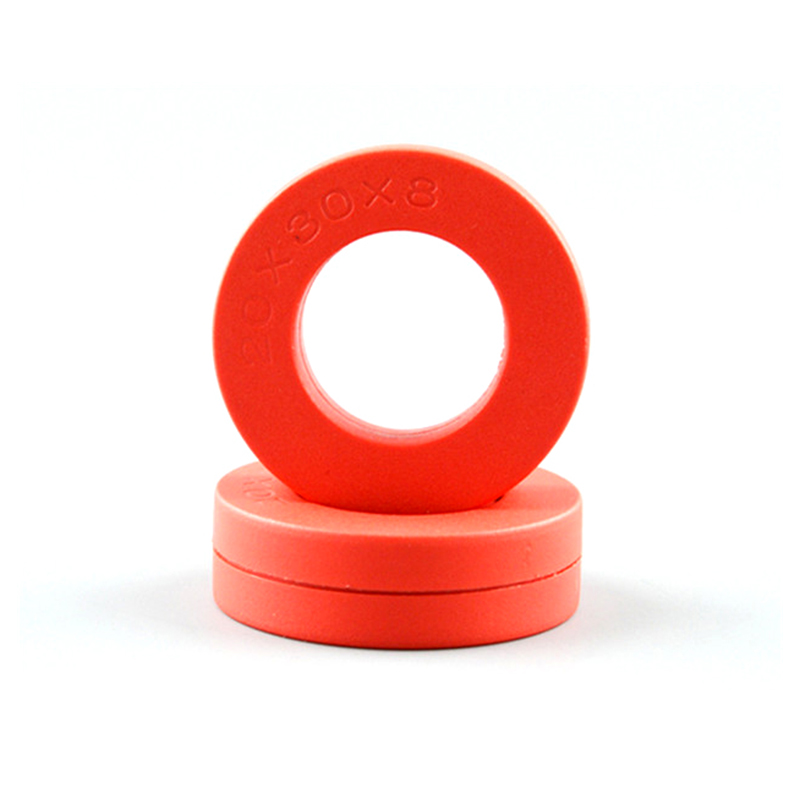What Defines a Rectangular Hysteresis Loop?
A hysteresis loop maps the relationship between the magnetic field strength (H) applied to a material and the resulting magnetization (B) within it. In most ferromagnetic materials, the loop is elliptical or rounded, reflecting gradual changes in magnetization as the field strength varies. However, in materials with a rectangular hysteresis loop, the transition between magnetized states is abrupt, creating a near-perfect rectangle on the graph. This sharp switching behavior is what sets these materials apart.
The defining characteristic of rectangular hysteresis loop cores is their ability to maintain a high level of magnetization until the applied field drops below a certain threshold, at which point they rapidly demagnetize. This behavior makes them ideal for applications requiring precise control over magnetic states.
Materials and Fabrication
The creation of rectangular hysteresis loop cores relies on carefully engineered magnetic materials. Commonly used materials include alloys such as cobalt-based amorphous metals, ferrites, and certain rare-earth compounds. These materials are chosen for their high coercivity—the resistance to changes in magnetization—and their ability to exhibit a square or rectangular B-H loop.
Fabrication techniques play a crucial role in achieving the desired properties. For example, heat treatment processes can be used to align the crystalline structure of the material, enhancing its magnetic characteristics. Additionally, the geometry of the core—whether it's a toroid, rod, or other shapes—can influence its performance in specific applications.

Applications of Rectangular Hysteresis Loop Cores
The unique properties of rectangular hysteresis loop cores make them invaluable in several fields. Their ability to switch quickly and reliably between magnetic states lends itself to applications where precision and repeatability are paramount.
Magnetic Memory Devices : One of the earliest and most notable applications of these cores was in magnetic memory systems, particularly in early computers. Known as "magnetic core memory," this technology relied on the bistable nature of rectangular hysteresis loop cores to store binary data. Each core could represent a bit of information, with its magnetization direction indicating a 0 or 1.
Switching Circuits : In modern electronics, rectangular hysteresis loop cores are used in switching circuits, where rapid and predictable transitions between states are required. These cores help ensure efficient energy transfer and minimize losses due to hysteresis.
Pulse Transformers : Pulse transformers, which are used to transmit electrical pulses with minimal distortion, benefit greatly from the sharp transitions of rectangular hysteresis loop cores. These cores help maintain signal integrity, making them essential in telecommunications and radar systems.
Magnetic Sensors : The distinct switching behavior of these cores also finds use in magnetic sensors, where detecting small changes in magnetic fields is critical. Their reliability ensures accurate readings even in challenging environments.
Power Electronics : In power conversion systems, rectangular hysteresis loop cores contribute to the efficiency of transformers and inductors. By minimizing energy losses during magnetization cycles, they improve overall system performance.
Advantages and Challenges
The advantages of rectangular hysteresis loop cores are clear: their sharp switching behavior, high coercivity, and stability make them ideal for applications demanding precision and reliability. However, there are challenges to consider. For instance, the materials used to create these cores can be expensive, and their fabrication often requires specialized processes. Additionally, while their abrupt transitions are beneficial in many scenarios, they may not be suitable for applications requiring gradual changes in magnetization.
Another consideration is the potential for energy loss due to eddy currents, especially at high frequencies. Engineers must carefully design systems to mitigate these losses, often by using laminated cores or materials with low electrical conductivity.
The Future of Rectangular Hysteresis Loop Cores
As technology continues to advance, the demand for materials with precise magnetic properties will only grow. Research into new alloys and composite materials promises to expand the capabilities of rectangular hysteresis loop cores, making them even more versatile. For example, developments in nanotechnology could lead to cores with enhanced performance at smaller scales, opening up new possibilities in miniaturized devices.
Moreover, the push toward sustainable technologies highlights the importance of efficiency in magnetic materials. Rectangular hysteresis loop cores, with their ability to minimize energy losses, are likely to play a key role in the development of next-generation renewable energy systems and electric vehicles.

 English
English 中文简体
中文简体 Deutsch
Deutsch 日本語
日本語
 View More >>
View More >> View More >>
View More >> View More >>
View More >> View More >>
View More >> View More >>
View More >> View More >>
View More >> View More >>
View More >> View More >>
View More >>